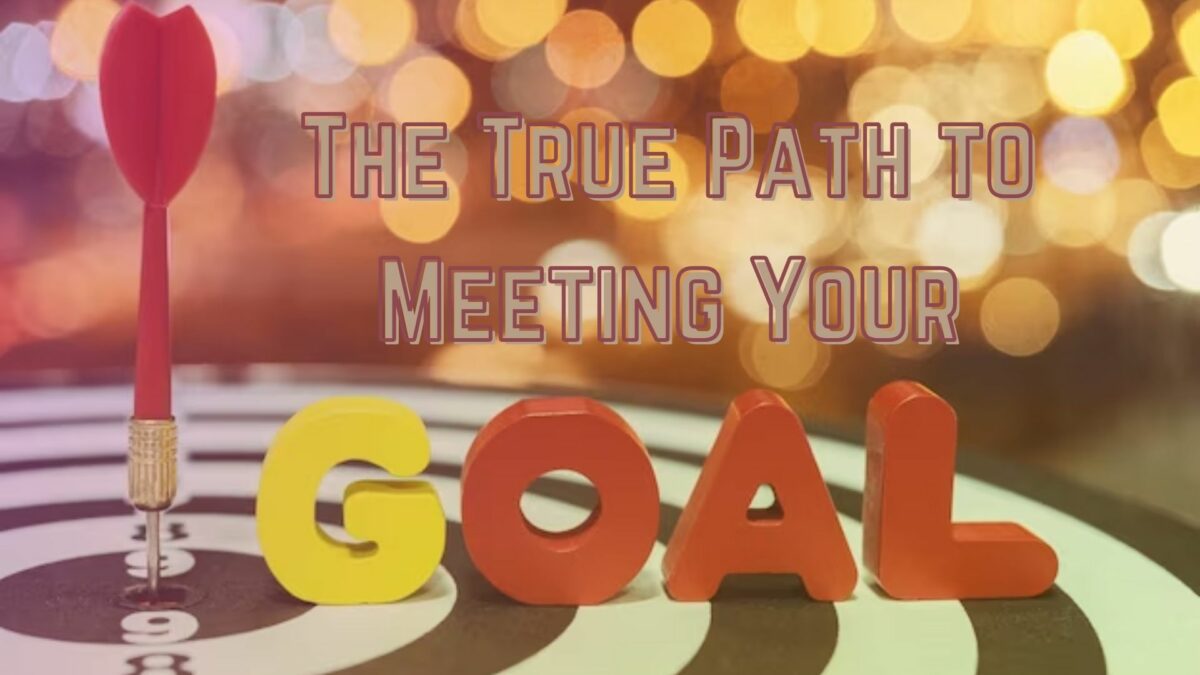“A goal is only a goal when you know you’re going to achieve it, otherwise, it’s a dream.”
–Unknown
For many of us, retirement is simply some vague notion of sitting on a porch somewhere, watching the traffic go by. Or, alternatively, it’s the absence of work. You don’t know what you’re going to retire to, but, by goodness, at some point, you’re going to not go to work, and you may even tell that boss of yours to go shove it.
Not I. I know when I’m quitting, how I’m quitting, and, at least for the first few years, what it is that I’m going to be doing when I’m done.
Do I have this all mapped out because I’m a financial planner, and isn’t retirement planning what financial planners are all about?
No.
It’s because I have a framework for achieving my goals.
Want to know what it is and how it can help you? Do you want to feel more certain that you’re going to achieve your aspirations in life?
Read on.
A Goal Without a Plan is Just a Wish

This quotation by French writer Antoine de Saint-Exupery shows the difference between the little kid who says that he wants to be an astronaut when he grows up and the person who has meticulously set forth a series of steps she is going to take to reach the goals in her life.
I was once a more idealistic person. I had hopes, dreams, and aspirations, but I really wasn’t doing anything to get there. I kind of knew what I wanted to do, and when I wanted to achieve something, I sort of took steps to make it happen.
But, there was no real pattern to my actions. I went with the flow. I trusted my guts and my instincts. I got distracted by shiny objects. I figured everything would work itself out along the way.
Having a vision but not having a great grasp on details is not the way to run a business, but that’s the way I was when I first started out. We sputtered and stumbled, but kept on our feet for the first couple of years. Finally, we decided that we needed to get a business coach to transform us from a startup mentality into the mindset of a more mature company.
We literally had a retreat on a mountain, which she led.
One of the first exercises she took us through was a goal-setting exercise.
However, this wasn’t just some airy, fluffy write your goals on a Post-It note exercise where we’d write down that we wanted to be astronauts or firefighters or whatever and then forgot about it.
She had a plan and a process.
What Jennifer did was to make us think more deeply about our goals, and provided us with a framework that we could use for making our goals less idealistic and more concrete.
Here’s the framework:
GOAL: You have to have something that you’re shooting for. Make it specific and set a timeline to achieve it.
REWARDS: Why do you want to achieve the goal in the first place? It should be something that is important to you and aligns with your priorities in life. What is that carrot you’re going to dangle in front of Monkey Brain to get him to go along with your schemes?
CONSEQUENCES: It’s the other side of the rewards equation. What will happen to you if you don’t achieve your goal? There must be a downside, or you would not have chosen the goal in the first place, as a goal implies change from what you currently have.
POSSIBLE OBSTACLES: What would stand in the way of you achieving your goal? If you name it, you can tame it.
POSSIBLE SOLUTIONS: What do you have to do to overcome those obstacles en route to achieving your goal?
ACTION STEP AND DATE: Now that you know what you have to do to overcome the obstacles, identify the specific steps that you have to take in order to successfully put them in the rearview mirror and a date by which you will achieve them.
WHO CAN HELP: No man is an island. There are some things which you can achieve on your own, but many more that you will need assistance for. This explicitly calls out resources that you can tap into to help you achieve your goals.
It’s also important to include one additional step in the framework. This is the talk in the mirror.
AFFIRMATIONS: This is where you remind yourself of why the goals that you have set forth are so important to you. It’s like a self pep talk before you go out there and kick rear end and take names.
This isn’t just an exercise you can go through once and forget about it. Otherwise, you won’t actually take the action steps that you’ve listed out to achieve your goals. They’ll be dates that you wrote down, and pretty soon, they’ll be dates in the past with nothing to show for them. This has to be a document and a plan that is consistently present in your mind, reminding you of what’s important, what you want to achieve, what you need to do to achieve those goals, and why they’re important to you.
Otherwise, you’ll wander. You’ll lose sight of the goal. Monkey Brain will find a shiny new object to pay attention to (“LOOK! 183” FLAT SCREEN TV ON SALE!!!”), and he’ll take that piece of paper with your goals on it and shred it.
If it’s truly important to you to achieve something in your life, don’t just give it lip service. Don’t dream about what you want to do and never take the first or the second or the third steps in making your dreams a reality. Make a plan. Tie it to your personal values and priorities. Make it concrete. Give yourself deadlines. Hold yourself accountable. Achieve the goals and be even happier when you have achieved them.
How do you plan to meet your goals? Let’s talk about it in the comments below!
Author Profile
- John Davis is a nationally recognized expert on credit reporting, credit scoring, and identity theft. He has written four books about his expertise in the field and has been featured extensively in numerous media outlets such as The Wall Street Journal, The Washington Post, CNN, CBS News, CNBC, Fox Business, and many more. With over 20 years of experience helping consumers understand their credit and identity protection rights, John is passionate about empowering people to take control of their finances. He works with financial institutions to develop consumer-friendly policies that promote financial literacy and responsible borrowing habits.
Latest entries
 Low Income GrantsSeptember 25, 2023How to Get a Free Government Phone: A Step-by-Step Guide
Low Income GrantsSeptember 25, 2023How to Get a Free Government Phone: A Step-by-Step Guide Low Income GrantsSeptember 25, 2023Dental Charities That Help With Dental Costs
Low Income GrantsSeptember 25, 2023Dental Charities That Help With Dental Costs Low Income GrantsSeptember 25, 2023Low-Cost Hearing Aids for Seniors: A Comprehensive Guide
Low Income GrantsSeptember 25, 2023Low-Cost Hearing Aids for Seniors: A Comprehensive Guide Low Income GrantsSeptember 25, 2023Second Chance Apartments that Accept Evictions: A Comprehensive Guide
Low Income GrantsSeptember 25, 2023Second Chance Apartments that Accept Evictions: A Comprehensive Guide

